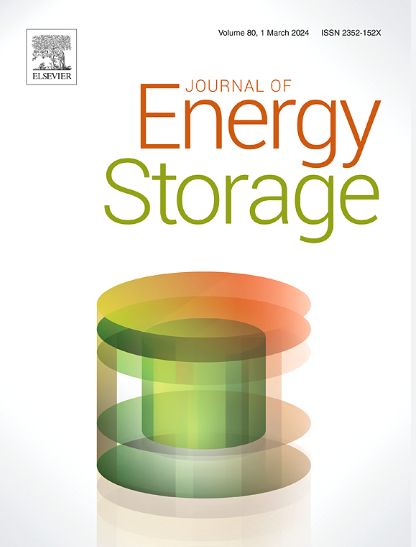Constructing intrinsic solid phase change materials with reprocessability and thermal energy storage through multiple hydrogen bonds and acetals
IF 8.9
2区 工程技术
Q1 ENERGY & FUELS
引用次数: 0
Abstract
Thermal management in flexible phase change materials (PCMs) for electronic devices necessitates a delicate balance between energy storage capacity, mechanical properties and reprocessability within complex application environments. However, the structural design of most flexible phase change materials only focuses on a single functional requirements and fails to meet the demands for phase change thermal energy storage materials and thermal management devices with multiple different performances. Therefore, we propose a simple and cost-effective strategy is proposed to fabricate intrinsic solid-solid phase change materials (SSPCMs) that balance heat storage, mechanical strength and reprocessability. We prepared a polyurethane matrix using high molecular weight PEG, which is more easily crystallized, and a bio-based acetal diol derived from furfural and 1,6-hexanediol. The introduction of bio-based acetal diols improves energy storage capacity and efficiency. In addition, the matrix contains multiple H-bonds, which act as strong physical crosslinks to enhance the mechanical properties of the flexible PCM. The resultant high-performance phase change materials (HFPCMs), with a polyethylene glycol (PEG) content of 80 wt%, show remarkable latent heat capacity of 134.43 J g−1, a tensile strength of 1034 %, high thermal stability (no significant shape change below 160 °C), and good reprocessability. In the cyclic thermal stability test, it has good reversible stability and cyclic sustainability. Overall, this work provides a new method to development of intrinsic SSPCMs with high energy storage capacity, good mechanical properties, and reprocessability, offering significant potential for advanced thermal management in electronic devices.
通过多个氢键和缩醛构建具有可再加工性和储热性能的本征固体相变材料
用于电子器件的柔性相变材料(pcm)的热管理需要在复杂的应用环境中在能量存储容量,机械性能和可再加工性之间取得微妙的平衡。然而,大多数柔性相变材料的结构设计只关注单一的功能需求,无法满足多种不同性能的相变储能材料和热管理器件的需求。因此,我们提出了一种简单且具有成本效益的策略来制造本禀固固相变材料(SSPCMs),该材料可以平衡储热、机械强度和可再加工性。我们用更容易结晶的高分子量聚乙二醇和由糠醛和1,6-己二醇衍生的生物基缩醛二醇制备了聚氨酯基体。生物基缩醛二醇的引入提高了能量储存能力和效率。此外,该基体含有多个氢键,作为强物理交联,增强了柔性PCM的力学性能。所得的高性能相变材料(HFPCMs),聚乙二醇(PEG)含量为80 wt%,具有134.43 J g−1的潜热容,1034%的抗拉强度,高热稳定性(在160℃以下无明显形状变化)和良好的再加工性。在循环热稳定性试验中,具有良好的可逆稳定性和循环可持续性。总的来说,这项工作为开发具有高能量存储容量,良好机械性能和可再加工性的本构sspcm提供了一种新的方法,为电子器件的先进热管理提供了巨大的潜力。
本文章由计算机程序翻译,如有差异,请以英文原文为准。
求助全文
约1分钟内获得全文
求助全文
来源期刊

Journal of energy storage
Energy-Renewable Energy, Sustainability and the Environment
CiteScore
11.80
自引率
24.50%
发文量
2262
审稿时长
69 days
期刊介绍:
Journal of energy storage focusses on all aspects of energy storage, in particular systems integration, electric grid integration, modelling and analysis, novel energy storage technologies, sizing and management strategies, business models for operation of storage systems and energy storage developments worldwide.
 求助内容:
求助内容: 应助结果提醒方式:
应助结果提醒方式:


